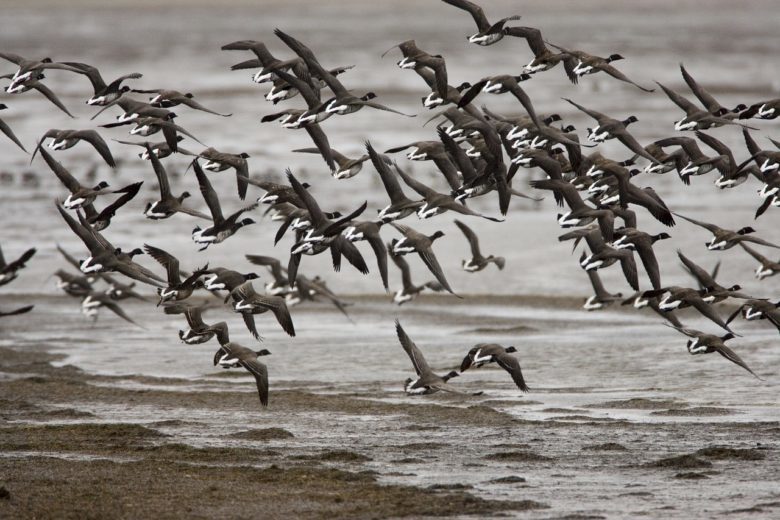
How Drilling Could Cause Extinctions in the Arctic National Wildlife Refuge
We are reader-supported. When you buy through links on our site, we may earn affiliate commission.
The Proposed Impact of Oil Development in the Arctic
On September 12th, the Trump Administration’s Interior Department published a final plan to open the Arctic National Wildlife Refuge (ANWR) to gas and oil development and leasing. This is the first time in history that the government will open leasing opportunities to drill from the ANWR. The plan will open 1.56 million acres on the Arctic Coastal Plain to promote the development of fossil fuels. The sanctuary in full is 19.3 million acres. Among one of the most feared impacts, there is a rising worry that upcoming oil and gas drilling may severely damage the wildlife habitat. In particular, the combination of drilling and climate change may lead to bird extinctions.
Bird Species At Risk For Extinction
The scope of the analysis is reported to be approximately 85 years, according to the plan. During this period, 69 bird species in the Arctic Coastal Plain out of 157 species found could go completely extinct. Some species are currently experiencing decreasing populations, so these actions will only feed an existing fire of catastrophic consequences. Out of the 69 flagged species, there are two bird species already listed under the Endangered Species Act:
- The Steller’s Eider
- The Spectacled Eider
The BLM report mentions the requirement for energy companies to gather enormous volumes from the ANWR water bodies, which will result in habitat and food loss for loons and several other waterbirds. From a global perspective, the extinction rate of species today is 1000 to 10,000 times higher than the rate of natural extinction. This new plan for ANWR may increase this rate even more with numerous downfalls of the drilling. Bird species could lose their nesting habitats to future road and infrastructure construction. Further, birds may be killed or injured during collisions with vehicles, communication towers, drilling rigs and more.
Oil Development Combined With Climate Change
Currently, 20 percent of species on earth are at risk of extinction. Unfortunately, the pristine reserve will likely add species to this endangered list in the coming years due to the government’s aggressive drilling approach coupled with the effects of climate change. Endangered species may be the most vulnerable to the impacts of rising temperatures. The combination of climate change and energy development will spike the speed of erosion within seasonal continental or global habitats for birds at risk. In addition to the endangerment of bird species, polar bears, wolves and caribou are well known for their struggling habitat in the Arctic due to climate change.
Without drilling, bird extinctions will increase dramatically in the future solely due to the changing climate. Adding this development to the mix of challenges that these species already face will influence the indirect and direct obstacles for these birds. Carbon dioxide emissions from the drilling itself could contribute to the temperature increase that is now affecting the coastal plain. BLM reports that climate change will be the most significant cause for extinction, but the impacts of oil development will likely fuel the issue and worsen the drilled regions.
How the Government is Responding to Threats of Extinction
Out of the multiple refuge plans that the Bureau of Land management considered, the strategy chosen includes the least amount of habitat protection actions and the highest level of oil and gas development. The final plan also states that future development across the Arctic Tundra will likely be “long term or permanent.” Further, the Trump Administration’s Interior Department rejected petitions that included a proposal to give 25 species protected status recently. This rejection helps to prolong the government from taking urgent action on conserving the safety of these animals.
The President has also proposed to cut budgeting for the Endangered Species Conservation Fund. The Endangered Species Act (ESA) works to protect animals across the nation. The act has brought back the bald eagle, whooping crane, grizzly bear, and many more from severe extinction threats. The sheer success of these organizations allows us the resources needed to release many more species from the government red list.
What is Next For the Arctic National Wildlife Refuge?
The Interior Department plans to offer leases in ANWR before the end of this year. According to the Energy Information Administration, the first oil produced within the refuge will take at least a decade. Environmental groups are now preparing to fight back against this plan in court. While the plan is set to be final, the Interior Department is still scheduled to release an official and formal record of decision. This decision is set to come to a close within the next month.
Following public action, many lawsuits against the decision may ensue. The President and CEO of Defenders of Wildlife, Jamie Rappaport Clark, plans to pursue action and summed the happening as “categorically illegal” and a “reckless effort to turn this iconic American landscape into an industrial oilfield.”
Share on
Like what you read? Join other Environment.co readers!
Get the latest updates on our planet by subscribing to the Environment.co newsletter!
About the author

Jane Marsh
Starting from an early age, Jane Marsh loved all animals and became a budding environmentalist. Now, Jane works as the Editor-in-Chief of Environment.co where she covers topics related to climate policy, renewable energy, the food industry, and more.





